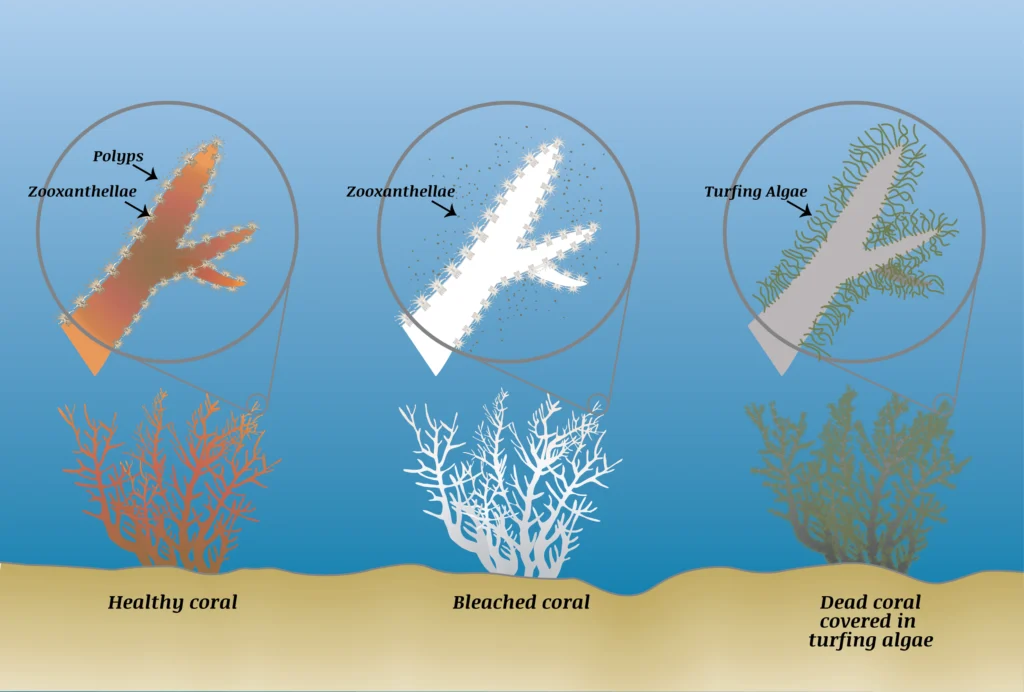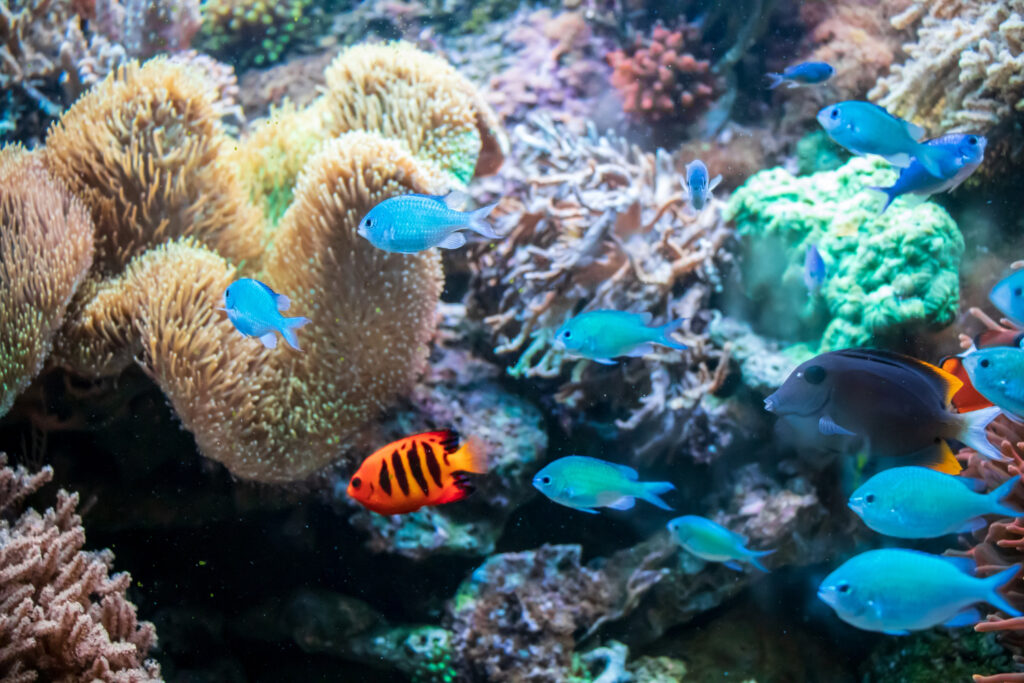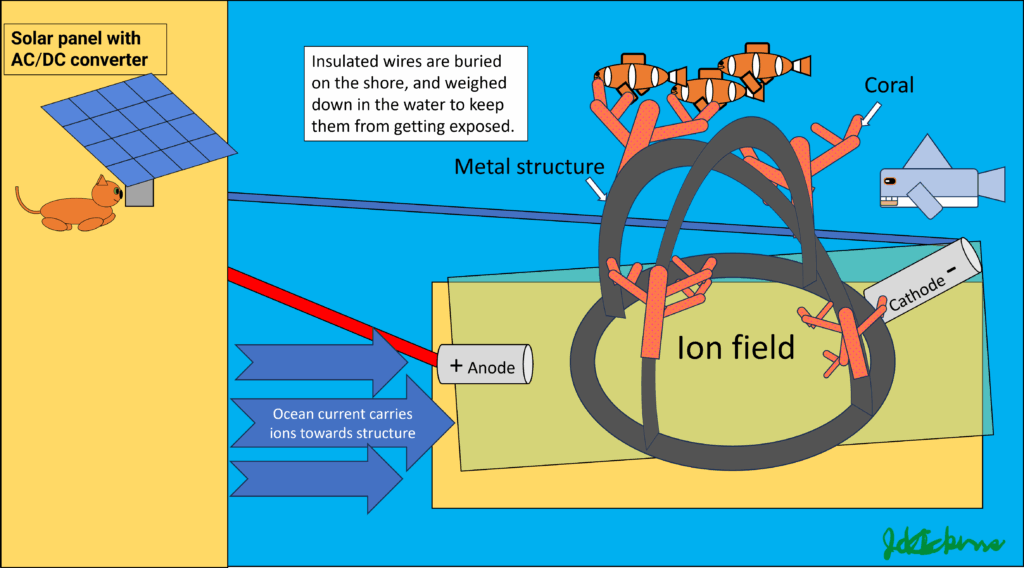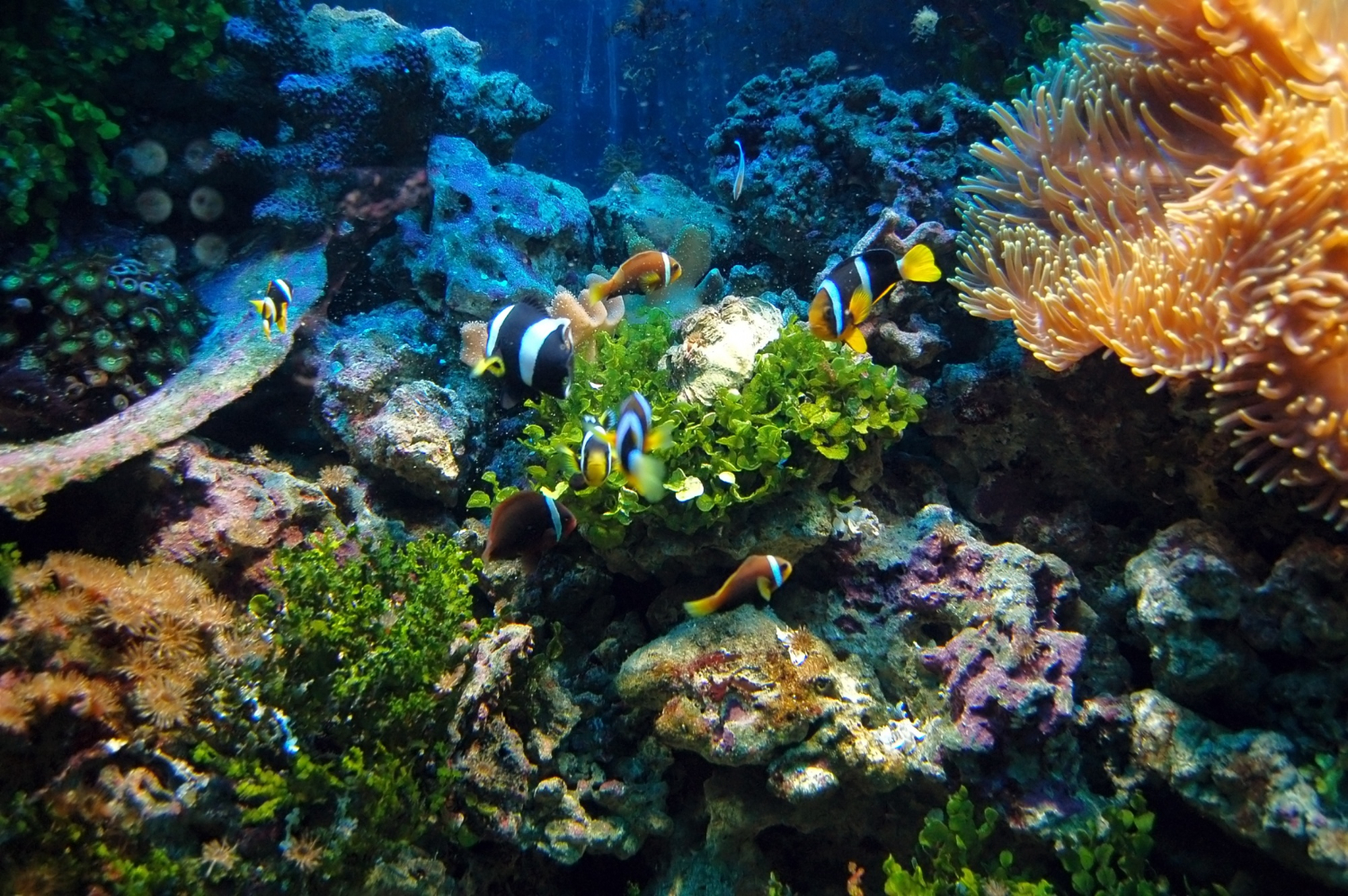Did you know that there are multiple methods to restore coral reefs that have sustained damage?
Marine Biology Researchers and Coral Restoration Biologists of the Indonesian Coral Triangle use two methods of coral restoration to reduce coral bleaching and actively protect coral reefs in Indonesia around Bali and Nusa Penida. Restoring coral has been successfully executed by the Mars Assisted Reef Restoration System (MARRS) and Mineral Accretion Technology (BioRock). Both methods were observed to restore the coral reefs around Bali and Nusa Penida while snorkeling.

The MARRS method starts with assembling reef stars, hexagonal steel structures coated with rust converter, resin mixture, and coral sand, while using local materials & involving community support. Those reef stars are transported to the coral restoration site, where there is only a bleached coral rubble field or an in-progress MARRS restoration. Later, coral fragments taken from the water are attached to the reef stars with zip ties. The coral fragments are sustainably gathered by scuba divers from nearby coral sources, making sure to take already broken coral or no more than one-tenth of a healthy coral. Once the coral is attached to the reef stars, they’re given to scuba divers to be connected together and anchored to the rubble field of the sea floor using steel stakes, forming a large web.

After setting up the reef stars, the coral has to be monitored and maintained by cleaning the competing algae off the web structure. In approximately 2-3 years, the coral grows to completely cover the reef stars, creating shelter for fish and other marine creatures to inhabit the area (Figure 2 (waiting on permissions): Smith, 2021). When comparing a rubble field reef area with no human conservation efforts, which had large amounts of coral bleaching, minimal biodiversity in fish species, and very little marine life around, to the coral restoration site while snorkeling in Nusa Penida, the coral restoration was observed to have healthier coral, vibrant and more biodiversity in species of fish, with overall increased biodiversity.
The BioRock method starts with assembling steel structures and electricity sources. The steel structures are electrically conductive, allowing for the ion and electrolyte flow from a DC power source to accumulate minerals such as calcium carbonate (limestone) onto the steel over a 2-5 year period for coral to be attached and grow on.

After 5-10 years, the coral spreads across the structures and the seafloor to form a healthy, vibrant coral reefs with increased biodiversity such as various fish, turtles, and starfish that can be observed while snorkeling. This growth occurs much more rapidly with the metal structures and electrodes than areas that don’t utilize the technology, as well as can reduce the loss of coral reefs when used on established rock and coral structures. Coral restoration successfully conserves existing coral and restores dead coral reefs to help protect marine wildlife and maintain marine biodiversity in those ecosystems.
References:
Featured Image by bedneyimages on Freepik
Biorock Technology. (2025). Biorock.net Technologies. Biorock.net; Biorock Technology. https://www.biorock.net/Technologies/index.html
Blue Corner Marine Research. (n.d.). What is Coral Bleaching? Blue Corner Marine Conservation. Retrieved July 9, 2025, from https://bluecornerconservation.org/coral-bleaching
Global Coral Reef Alliance. (n.d.). Biorock®/ Mineral Accretion Technology for Reef Restoration, Mariculture and Shore Protection. In www.cbd.int. Retrieved July 5, 2025, from https://www.cbd.int/doc/case-studies/tttc/tttc-00160-en.pdf
Global Coral Reef Alliance. (2009). Biorock, Mineral Accretion Technology, Seament. Globalcoral.org; Global Coral Reef Alliance. https://www.globalcoral.org/biorock-coral-reef-marine-habitat-restoration/
Hilbertz, W., Goreau, T., & Global Coral Reef Alliance. (2001, May 29). Pemuteran Coral Reef Restoration Project (Bali). Globalcoral.org; Global Coral Reef Alliance. https://globalcoral.org/_oldgcra/pemuteran_coral_reef_restoration.htm
Lathifa, A. (2021, December 3). Coral Restoration: Active vs Passive. Biorock-Indonesia.com; Biorock Indonesia. https://www.biorock-indonesia.com/en/coral-restoration-active-vs-passive/
Mars, Incorporated. (2019, June 12). Taking Responsibility to Rebuild Coral Reefs | Mars, Incorporated. Www.mars.com. https://www.mars.com/news-and-stories/articles/coral-reef-rehabilitation
Mars, Incorporated. (2021). Our Solution – Building Coral. Buildingcoral.com; Mars Coral Reef Restoration. https://www.buildingcoral.com/our-solution
Sekarini, D. A. (2020, November 27). Biorock: Teknologi Untuk Menyelamatkan Karang. Biorock-Indonesia.com; Biorock Indonesia. https://www.biorock-indonesia.com/biorock-teknologi-menyelamatkan-karang/
Smith, D. (2021). Mars Assisted Reef Restoration System. Icriforum.org; International Coral Reef Initiative (ICRI). https://icriforum.org/mars-assisted-reef-restoration-system/
Thomas, A. (2023, December 10). MARRS: A Revolutionary Technique for Restoring Coral Reefs. Aquamarinediving.com; Aquamarine Diving – Bali. https://www.aquamarinediving.com/marrs-mars-assisted-reef-restoration-system/
